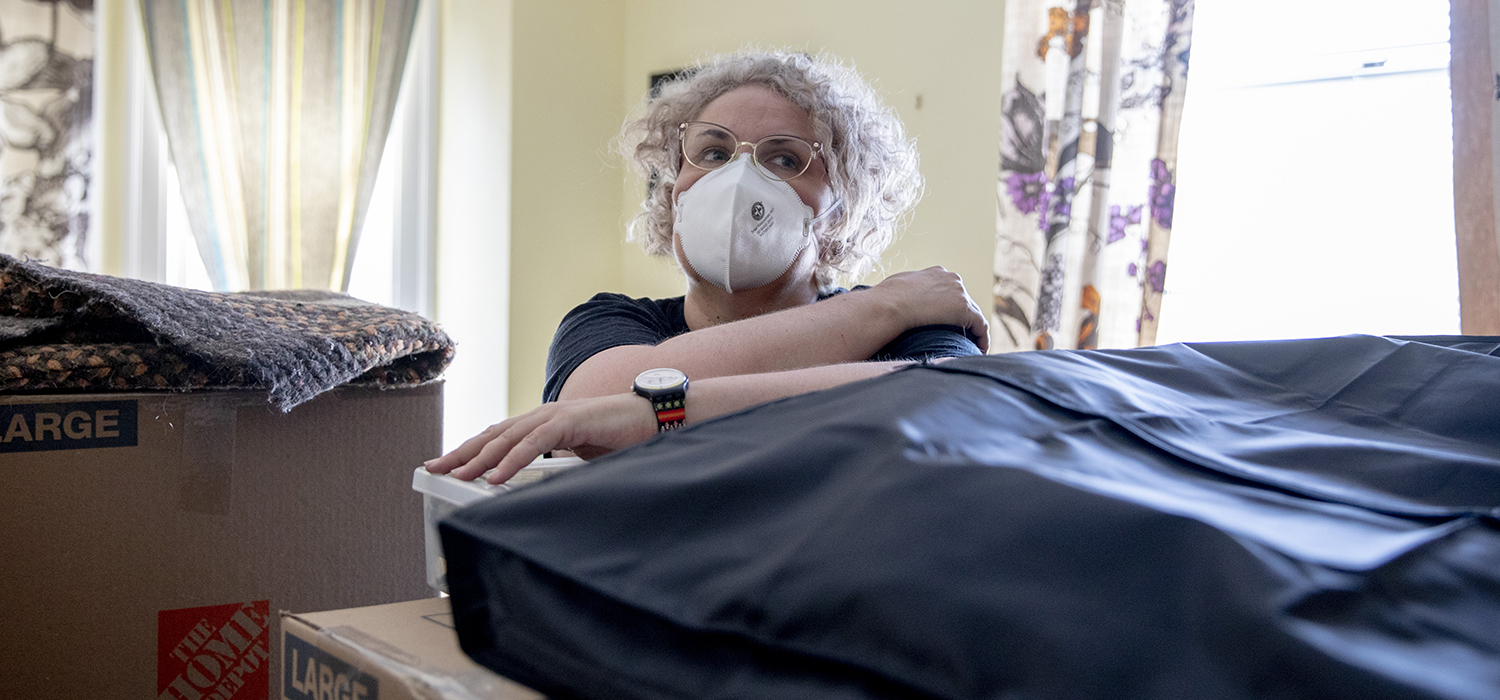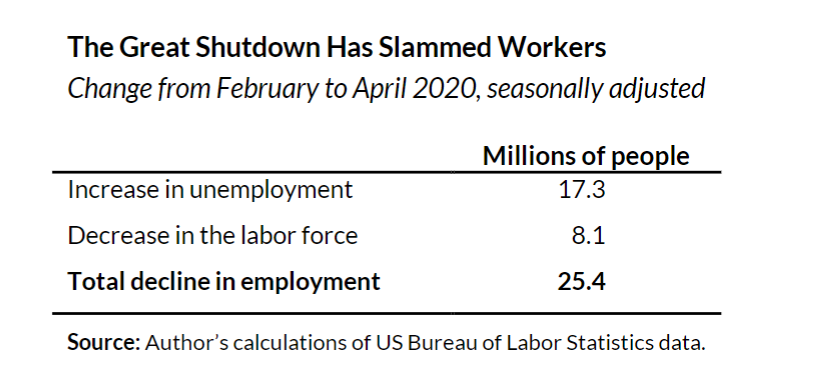
Driven by the COVID-19 shutdown, April marked the greatest job loss in American history. The unemployment rate skyrocketed to 14.7 percent, and employers cut 20.5 million jobs.
Those figures are heart-wrenching. But as awful as they are, they do not fully capture workers’ hardships. To be counted as unemployed, people must be available for work and actively seeking it. With schools closed, job opportunities withering, and social distancing the new norm, many displaced workers don’t satisfy those requirements. Instead, they officially show up as having left the labor force.

From February to April, the labor force shrank by 8 million people. Add that to the more than 17 million increase in unemployment, and 25 million Americans are no longer employed. More than 61 percent of Americans had jobs in February. In April, only 51 percent did, the lowest level since records began in 1948.
In addition, millions of Americans still have jobs but have seen their hours cut. From February to April, the number of people reporting that they work part-time for economic reasons rose by 6.6 million. That spike happened even though part-time workers have lost jobs at a particularly sharp rate. Unemployment among people who usually work part-time rose from 3.7 percent in February to 24.5 percent in April, while unemployment for full-time workers rose from 3.5 percent to 12.9 percent.
Americans from all walks of life are suffering in the great shutdown. But the employment damage is not distributed equally. As often happens in downturns, highly educated workers have fared better than those with less education. Among workers with a college degree, unemployment increased from 1.9 percent in February to 8.4 percent in April. High school graduates with no college education, however, have seen unemployment spike from 3.6 percent to 17.3 percent.
Teenage unemployment is now almost 32 percent, far more than for older workers. Unemployment among Hispanic workers has increased more than for white, black, and Asian workers. Women experienced a larger increase than did men.
We are living through remarkable times. The United States has not experienced unemployment at these levels since the Great Depression. The one bit of good news is that many job losses may be temporary. Indeed, a record 78 percent of unemployed workers report they are on temporary layoff.
Unfortunately, many jobs will be permanently lost. To date, policymakers have rightly focused on economy-wide disaster relief. Keeping families and employers financially afloat is essential for an eventual recovery.
When we start down the path to recovery, policymakers should assess how severe the longer-term damage will be and consider policies that accelerate the return to full employment.
Tune in and subscribe today.
The Urban Institute podcast, Evidence in Action, inspires changemakers to lead with evidence and act with equity. Cohosted by Urban President Sarah Rosen Wartell and Executive Vice President Kimberlyn Leary, every episode features in-depth discussions with experts and leaders on topics ranging from how to advance equity, to designing innovative solutions that achieve community impact, to what it means to practice evidence-based leadership.